Beyond the limit of imagination // by Yaacov Hecht
Posted on
November 15, 2021
in
During the many years I have been involved in learning and developing new ideas, especially in the field of education, I have repeatedly faced what I call the “limit of organizational imagination”. This paper describes the nature of this limit and how it can be expanded. I will try to show how by expanding the limits of imagination, organizations can break the “more of the same” loop, develop and implement groundbreaking ideas.
When I describe an organization, I usually divide its activities into several fields:
“The existing activity field” – this is the field that includes all the activities of the organization, historical and current, answering the questions “what”, “why” and “how”.

“The goals field” – most organizations have, in addition to current activities, plans for the future; What are they going to do this year and maybe even in the next few years. At the margins of the “goals field” is the “organizational vision” – the organization’s statement of the development’s directions for longer periods of time.
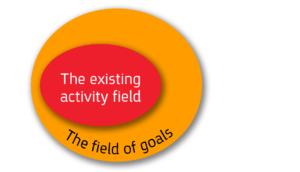
These are usually the two main fields that describe the organization.
There is another field that I believe, greatly affects the ongoing activity in the first two fields. This is the “organizational imagination field”, which describes how far the organization can imagine its development or how will it answer the question – what will my “dream school” look like, assuming I have all the necessary approvals and all the necessary budgets.
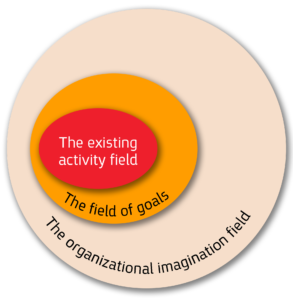
The organization’s answer to this question can stem from a discoursed narrative in a networked organization, or from a narrative dictated by the head of a pyramidal organization. In any case, the impact of the answer on the organization’s conduct is enormous. That is because we live in a period that requires flexible thinking that outlines a way but is also able to allow accelerating changes according to occurrences. I will show later on how the organizational imagination field, unlike the “goals field”, combines these two needs.
At the edge of the imagination field there is a “cliff” into which anyone who says things we are unable to imagine is “thrown”. Things that go beyond the three familiar fields:
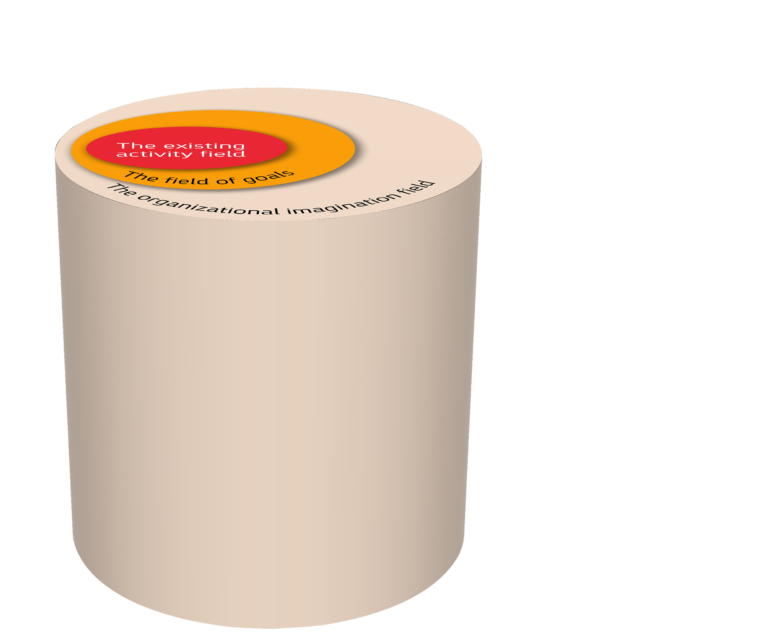
Many times, such a person will be perceived as detached from reality and even as a threat. In response, his or her ideas will be thrown into the “exclusion zone” located beyond the cliff.
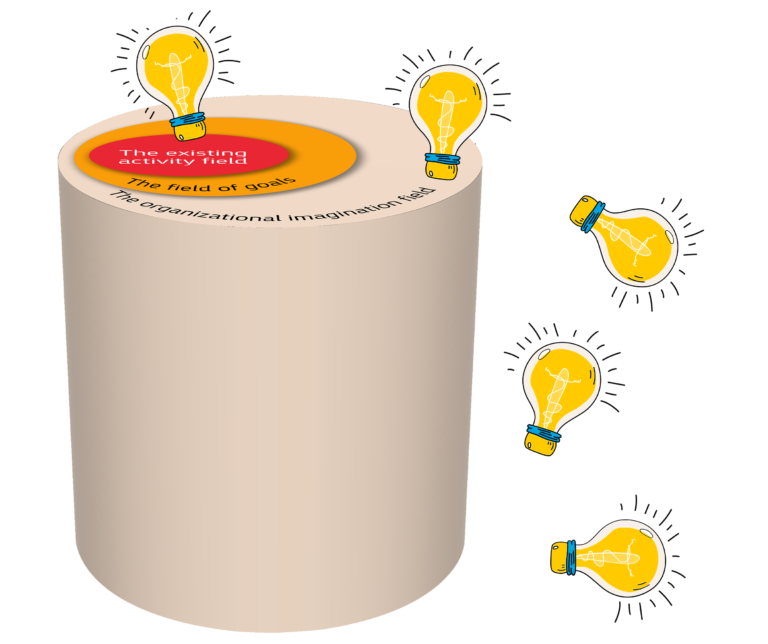
In the space between the goal field and the limit of the imagination, is the “limit of courage” which indicates how far the members of the organization have the courage to go, so that they will not be “thrown into the abyss.”
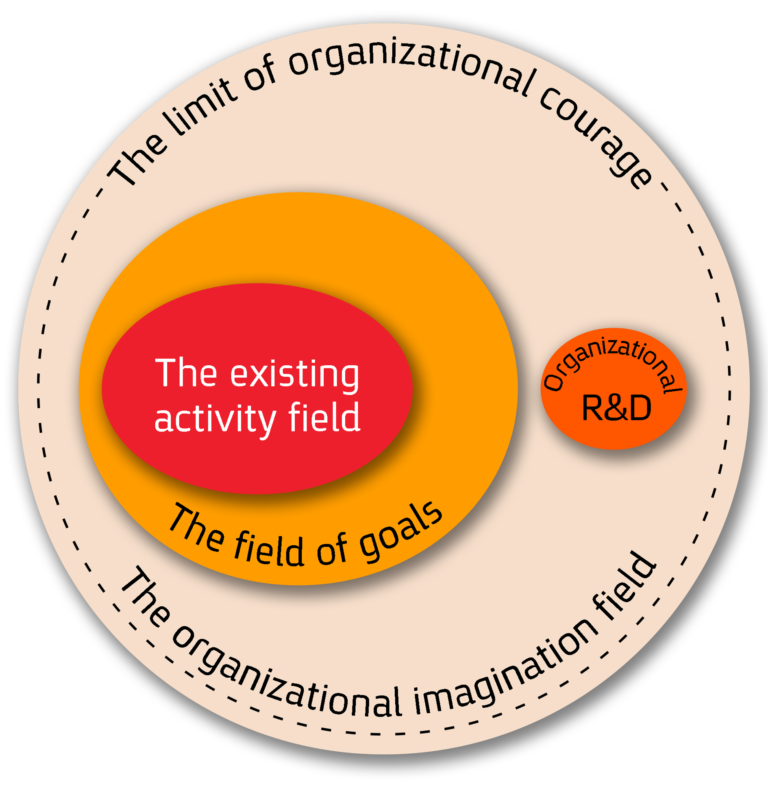
In many educational organizations in Israel and around the world, the organizational fields look like this:
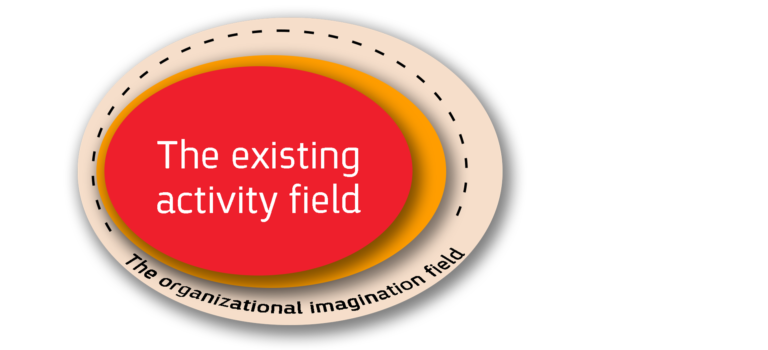
The boundaries limit of existing activity, the limit of daring and the limit of imagination are close to each other. This is mainly reflected in the statements of the schools that they are very satisfied with the current situation and even with difficulty accepting criticism or suggestions for change. I believe the main reason for this is that most schools have long been on defense against frequent attacks by parents, students, academy and the media.
The farther the limits of the organizational imagination are from the boundaries of existing activity, the more space is created for the creation of a new conception of education. Following my perception of the organization as a living being and not as a machine, I call it the “birth” of a new perception. And as with any birth, before it – a pregnancy takes place in the womb. Every organization needs a space large enough for the inclusion of the organizational womb or R&D, from which the new ideas will emerge, the ones that will further expand the limits of imagination.
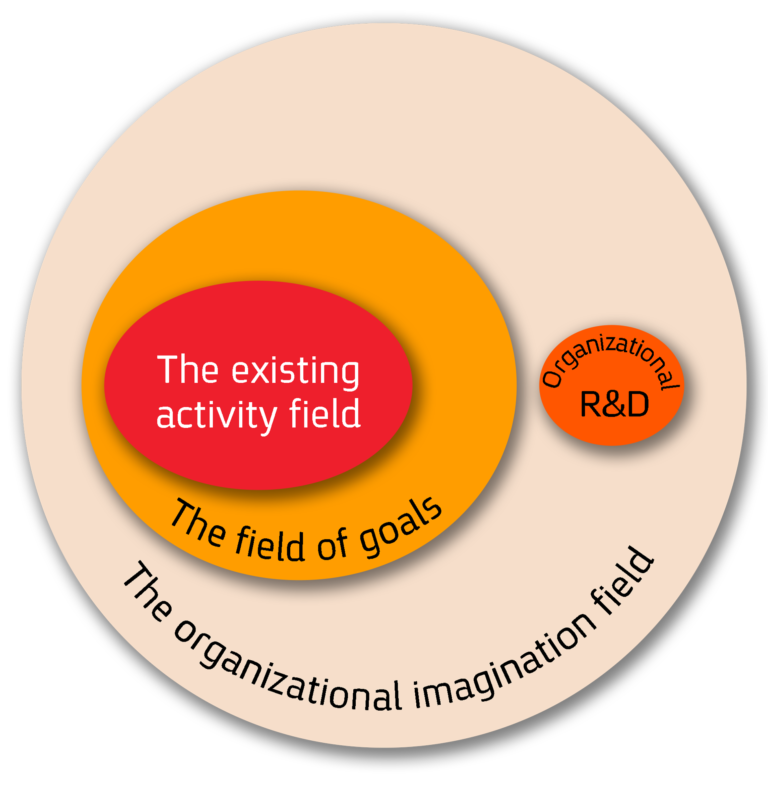
Assuming that there is enough space between the border of the imagination and the border of existing activity, and that “organizational womb” is created, it will be subject to two opposing gravitational forces:
One – attraction to the existing activity (the red arrow) – that tries to make sure that the school does tomorrow exactly what it did today and yesterday, that is, “go for sure” because “safe” means doing what we have already done.
The second – attraction to the imagination (the green arrow) – which tries to make us try new things and yes, also take risks.
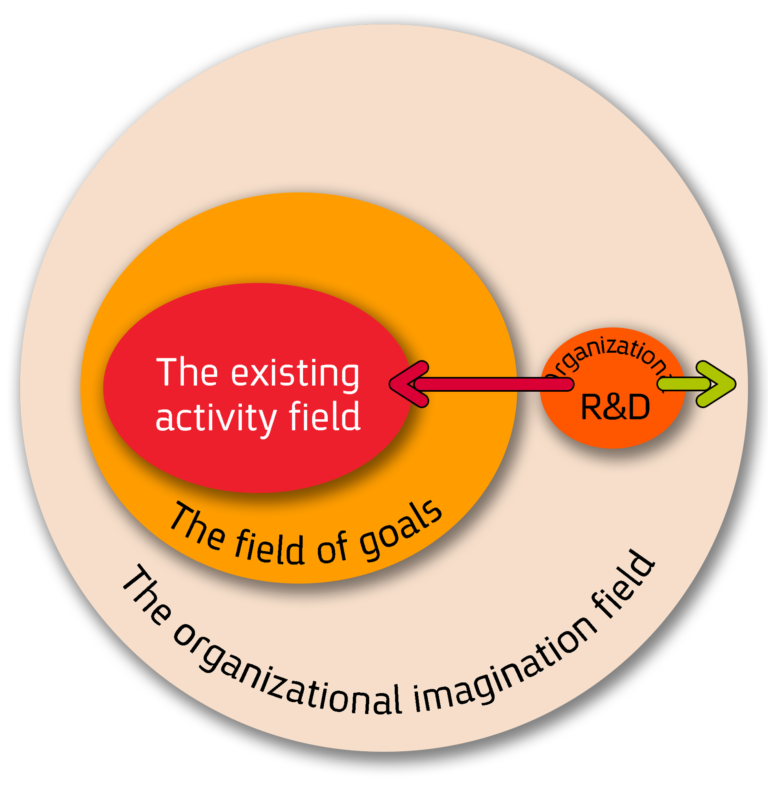
If so, how can attraction to the imagination be strengthened?
My answer is – by exposure to organizations that live and work close to our boundaries of the imagination and beyond. That is, organizations whose current field of activity is parallel to the place we only imagine. Or in other words, organizations parallel to us that are already “living the dream” or close to it. I call them “islands of innovation.”
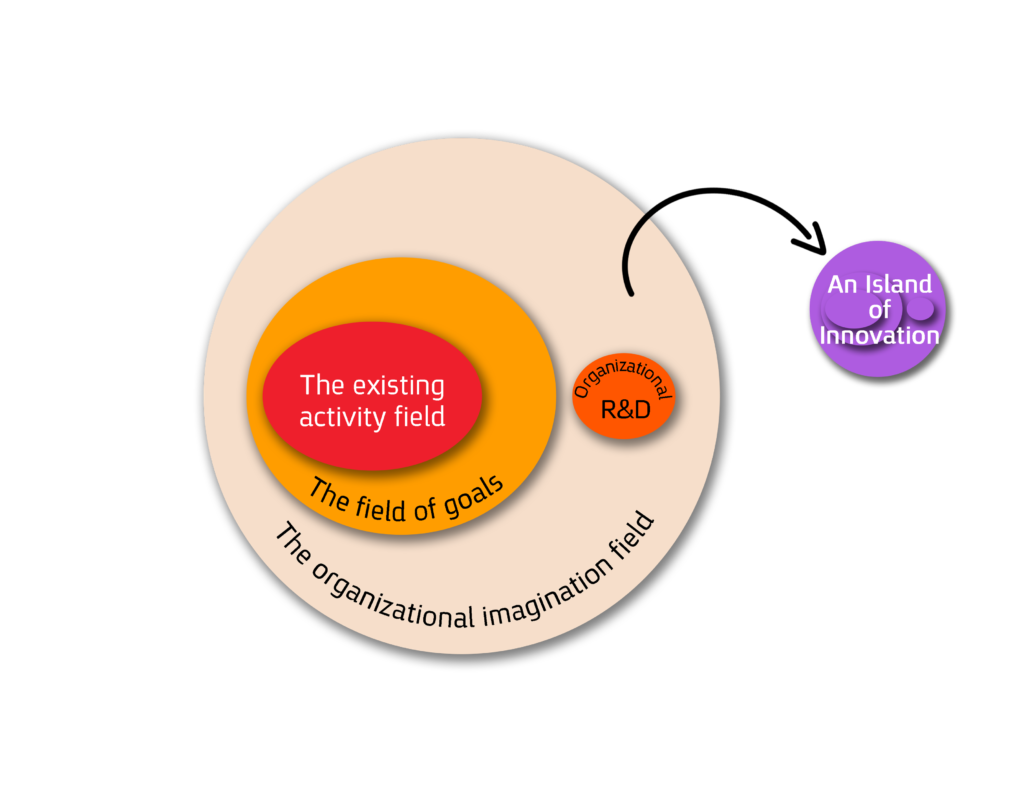
An island of innovation, in contrast to the “continent” that surrounds us, can be a source of learning and inspiration and can even increase the courage and audacity to act. When all this happens, the “organizational imagination field” grows and strengthens and with it is also established the organizational “womb” that produces new horizons for the organization.
It is important to be precise, this is not about adopting the ideas of the island of innovation or copying them. The goal is to deepen learning, to be exposed to innovative doing and thus increase our ability to imagine and expand the boundary of our unique imagination. It is therefore important to be exposed to several islands of innovation and different directions, so that there is no immediate tendency towards just one way.
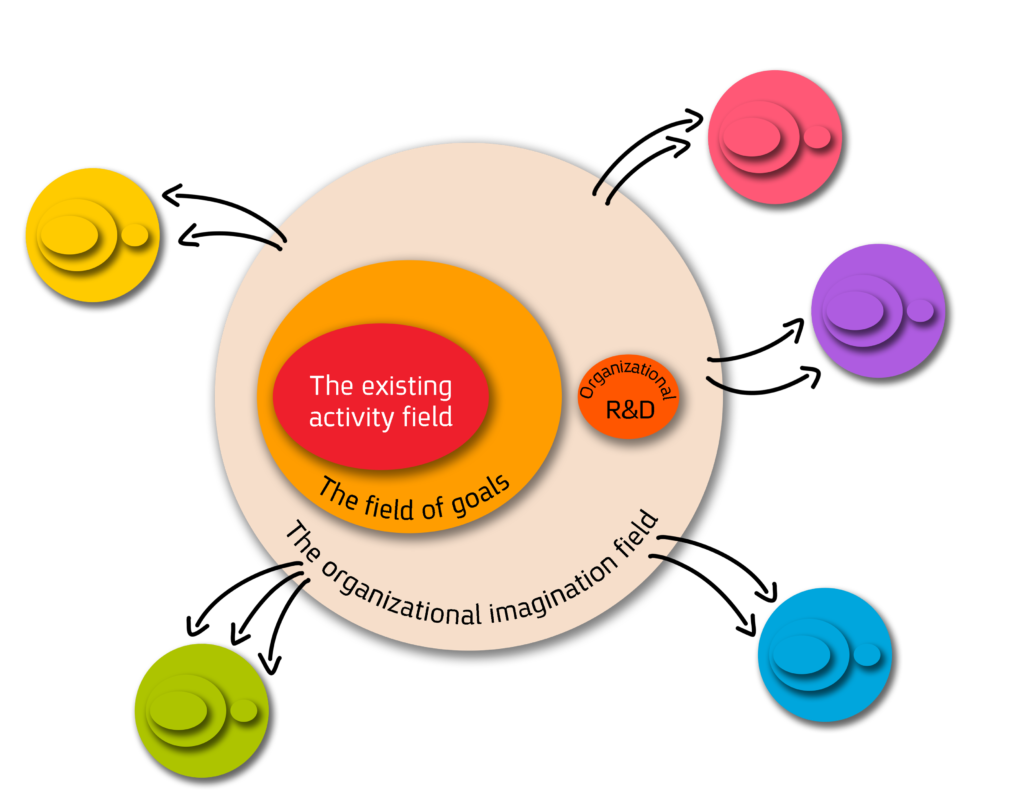
When optimal exposure to islands of innovation occurs, three processes can be distinguished:
Expansion – the circle of imagination grows and becomes richer with many new ideas.
Deepening – the colors of the image are sharpening, more and more diverse ways of implementing these ideas are becoming clear.
Connection – The ideas of the innovation islands flow into the organizational R&D, meet with the experiences and unique characteristics of the organization itself and form a future picture. One that produces a clear horizon but also a flexible space that is open to change.
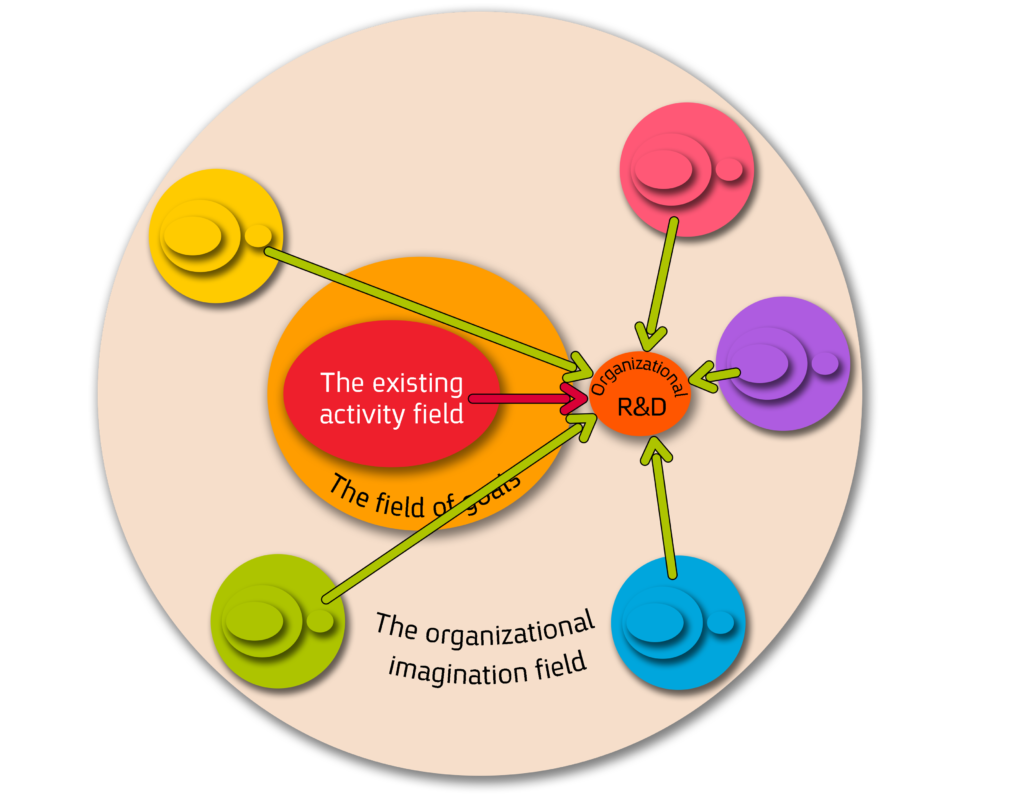
I believe that any learning process can be meaningful and contribute greatly to the growth of the organization. However, it is advisable to distinguish between the different types of learning and thus more easily discern the missing components.
I usually divide the learning process into three circles:
The first circle – learning from the internal organizational experience.
The second circle – learning from close organizations, colleagues, and competitors operating around us (for example in Israel).
The third circle – learning from the world’s leaders in the chosen field, organizations that have gone the furthest in the field that interests us, both on their current situation and on the future directions they mark for themselves.
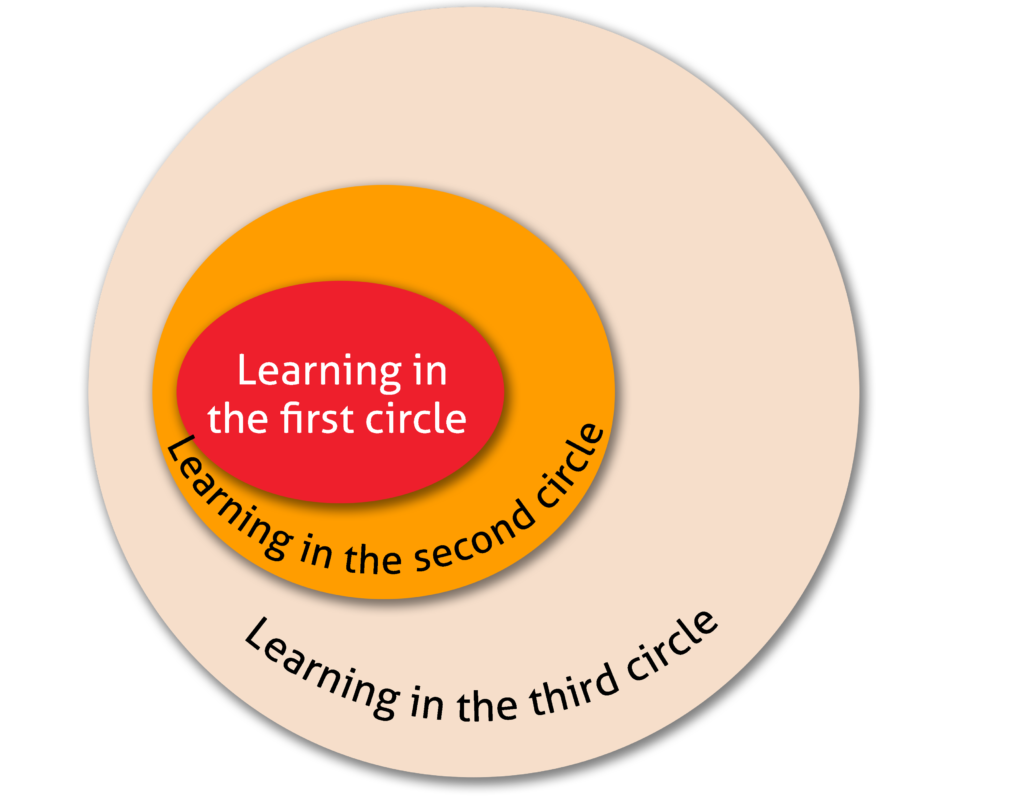
In what is known as the “old world,” learning has often been focused on the personal experience gained in the organization. Many times the statement that represents this learning is “We tried, it does not work”, which means mixing our personal experience with universal reality.
At present, I am happy to say, more and more organizations are using peer learning, both within the organization and with parallel organizations in the city or country.
Few (in my opinion, too few) study in the third circle, know groundbreaking organizations in the world, operating outside our imagination, or are aware of future predictions of the development of the field in which they are engaged. This is although the Covid 19 era certainly is making more and more people and organizations realize that getting to know organizations around the world can help solve local challenges.
I call the balance between the three learning circles, GLOCAL learning – learning globally (around the world) and working locally. I believe that such learning will lead to exposure to new worlds, to learning in-depth, to inspiration, and ultimately, to progress that will go beyond the limits of the imagination.
Therefore, I recommend that before you act, it is worthwhile to first expand the boundaries of the imagination and thus shorten the path to solving challenges.